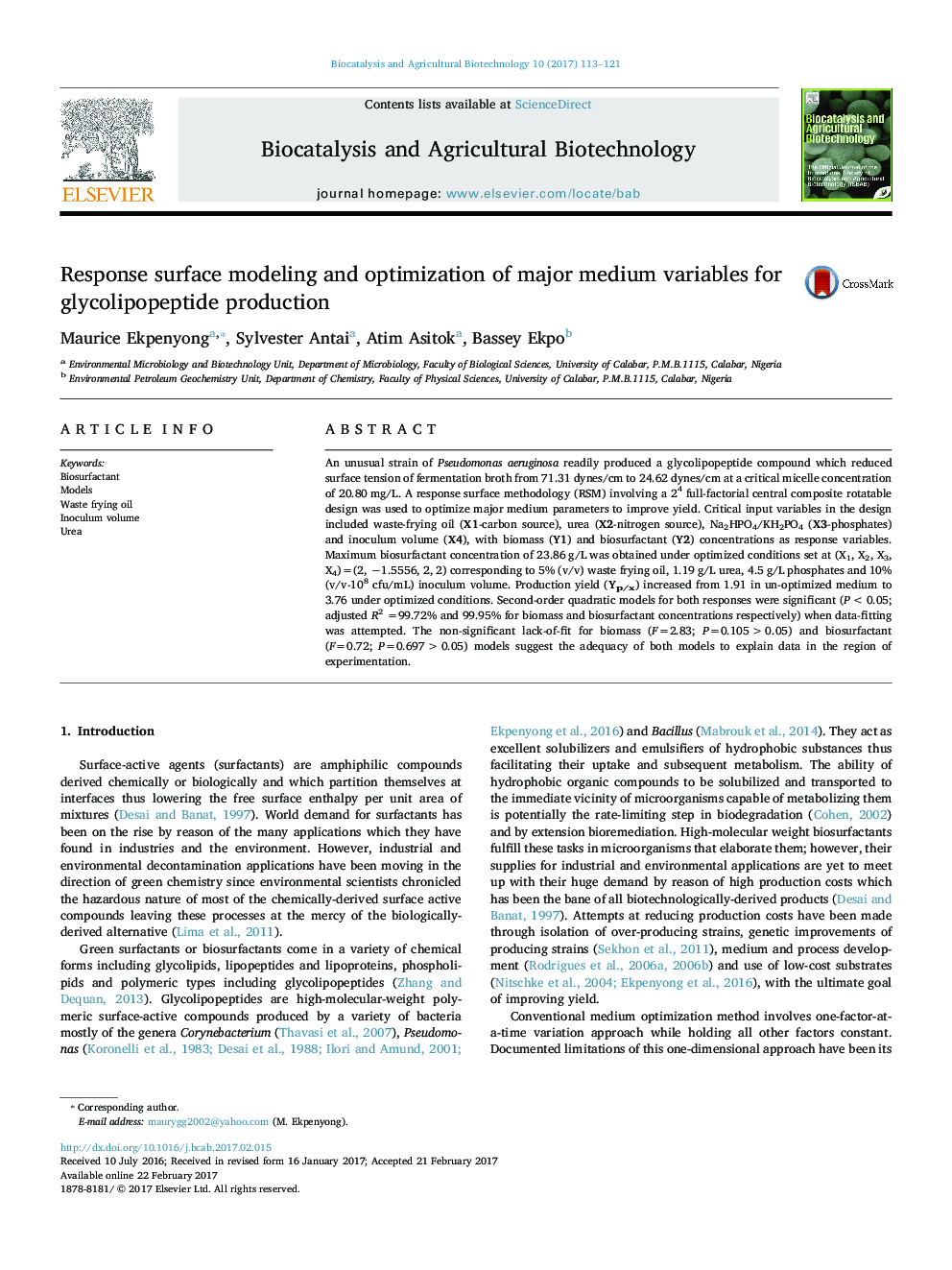| کد مقاله | کد نشریه | سال انتشار | مقاله انگلیسی | نسخه تمام متن |
|---|---|---|---|---|
| 5520495 | 1544902 | 2017 | 9 صفحه PDF | دانلود رایگان |
- Waste frying oil, urea, Na2HPO4/KH2PO4, 108 cells/mL were the input factors.
- High levels of the carbon, phosphates and inoculum volume were required.
- Very low levels of urea-nitrogen were required.
- Statistical optimization led to a 1.91-fold increase in glycolipopeptide production.
- Restaurant oil waste management is proposed through glycolipopeptide production.
An unusual strain of Pseudomonas aeruginosa readily produced a glycolipopeptide compound which reduced surface tension of fermentation broth from 71.31 dynes/cm to 24.62 dynes/cm at a critical micelle concentration of 20.80Â mg/L. A response surface methodology (RSM) involving a 24 full-factorial central composite rotatable design was used to optimize major medium parameters to improve yield. Critical input variables in the design included waste-frying oil (X1-carbon source), urea (X2-nitrogen source), Na2HPO4/KH2PO4 (X3-phosphates) and inoculum volume (X4), with biomass (Y1) and biosurfactant (Y2) concentrations as response variables. Maximum biosurfactant concentration of 23.86Â g/L was obtained under optimized conditions set at (X1, X2, X3, X4)=(2, â1.5556, 2, 2) corresponding to 5% (v/v) waste frying oil, 1.19Â g/L urea, 4.5Â g/L phosphates and 10% (v/v-108 cfu/mL) inoculum volume. Production yield (Yp/x) increased from 1.91 in un-optimized medium to 3.76 under optimized conditions. Second-order quadratic models for both responses were significant (P<0.05; adjusted R2 =99.72% and 99.95% for biomass and biosurfactant concentrations respectively) when data-fitting was attempted. The non-significant lack-of-fit for biomass (F=2.83; P=0.105>0.05) and biosurfactant (F=0.72; P=0.697>0.05) models suggest the adequacy of both models to explain data in the region of experimentation.
Journal: Biocatalysis and Agricultural Biotechnology - Volume 10, April 2017, Pages 113-121
